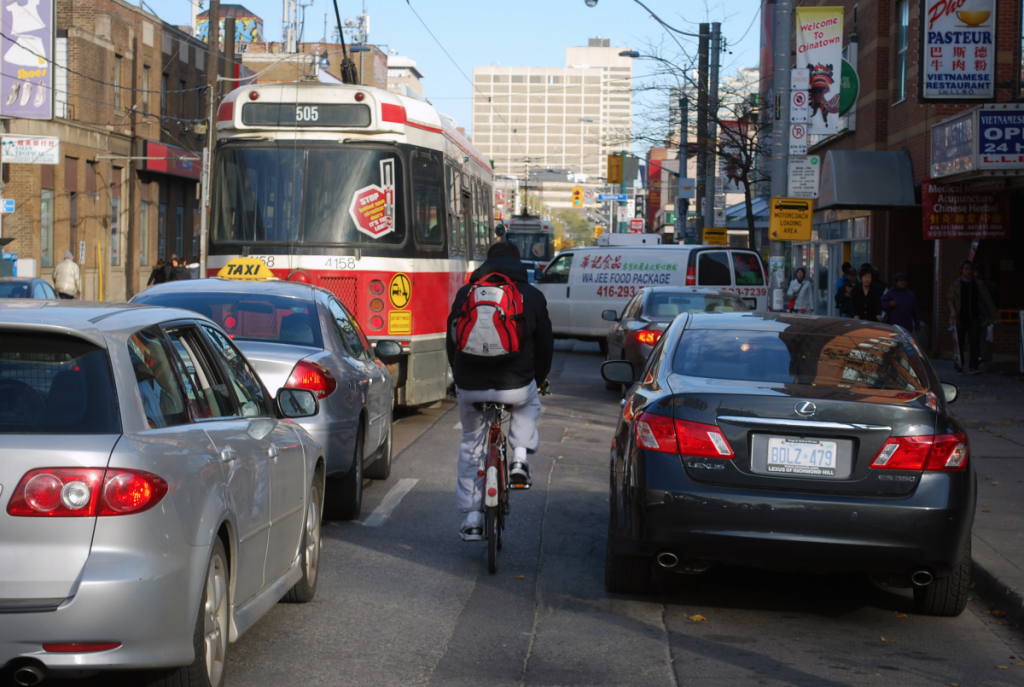There is a growing chorus – from industry leaders, academics and tuned-in consumers – calling for revolutionary change across our mobility networks. Technological developments, the inadequacies of our existing infrastructures and the architectural and demographic transformation of our cities are hastening these changes, making them both more feasible and more necessary.
Here at ustwo, we are excited by this shifting landscape seeing it as a space primed for digital innovation and mobile solutions. From ustwo auto to developing our own IP such as Wayfindr and working with partners like JLR, Ford and Skånetrafiken, we have already started making an impact in the space. And a big part of this has involved continued collaboration and discussion among varied stakeholders and thought leaders.
Recently, I had the opportunity to join this wider conversation when I was invited to take part in a debate at the London Transport Museum alongside some leaders in the mobility space. The topic up for discussion was the design of our surface transport infrastructure. It gave me a fantastic chance to gather feedback on my thoughts about the role that shared, autonomous vehicles will play in our future and listen to some of the ambitious solutions that are already being explored.
It was great to delve into this meaty topic which, depending on who you're talking to, has been hailed as a pipe dream, imminent revolution, or dangerous fad. For me, the reality is that we need to adopt shared, autonomous vehicles because they will be instrumental in solving the problem of mobility far better than our current solutions – however there is a major challenge in making sure this solution is scalable.
When it comes to implementing this technology how do we make sure it is done in a sustainable way, which addresses the breadth of our mobility problems? The answer is in accessible design and making use of the diverse data sets this will provide.

Current Inefficiencies
We all depend upon mobility, whether it’s us getting from A to B or the goods we depend upon. We’ve seen elegant solutions to this problem throughout history, and some have been revolutionary – from saddle to sled to cycle to owning and driving our own personal vehicles. In the face of rapid technological transformation, however, our solutions are increasingly exposed as inefficient and inaccessible.
Take the model of car ownership – for a car owner, their response to mobility needs is a private vehicle that they’re able to drive to any connected locations. Whilst it is an efficient solution, in most ways, for the owner, the luxury of possessing a private vehicle comes at the expense of significant inefficiency to those of us who don’t own one.
Cars are left unused for 95% of the day. The sides of our roads are clogged with empty vehicles, while there are masses of people who can’t afford their own. It’s not unusual to pass hundreds of empty, parked cars when walking to a train station. This is going to seem ridiculous in years to come – any one of these vehicles could easily complete the journey. I believe that the model of private ownership doesn’t make sense as a contemporary solution to the problem of mobility.
Mobility For All
There’s also a significant problem with inaccessibility. A car may not be a suitable mode of transport for financial reasons, or it may be age or disability-related. A truly accessible mode of transport would be a viable option for all whilst maintaining efficiency.
We could look at the model we see in shared transport systems to offer more accessible solutions. There are buses, trains, taxis and planes, all of which offer far greater accessibility than private cars. They empower us to travel the world without owning our own vehicle, needing any particular skills nor requiring constant engagement for the duration of the trip. Quite impressive when you stop to think about it.
Unfortunately, this accessibility is exchanged for efficiency – I would argue that all of our current solutions are inefficient ways of solving the problem of mobility. We are currently required to plan our journeys around the chosen mode of transport. This depends on us travelling to a defined location at a specific time and then trusting in the transport system. Needless to say, there’s room for improvement.
Do Autonomous Vehicles Provide the Solution?
We need public transport to become more efficient while private transport becomes more accessible. What does this mid-ground look like?
We’re starting to see autonomous vehicles being tested on our roads. We’re beginning to explore how the sharing economy can fit in the world of transport. So it makes sense that in the coming years we’ll be seeing shared, autonomous vehicles on our roads - and there are two main reasons why I’d argue that this needs to happen.
Towards Efficiency

The image above is a testament to the inefficiency of our current solutions; there are multiple different modes of transport battling against each other to complete the same task, some even unused. Utilising shared, autonomous vehicles will mean that our roads will no longer be littered with so many unused vehicles.
Imagine everyone in London who is travelling at this moment. They could be walking to the train, on a bus or getting into their car. They all have a need to get from their A to their B. Now if we take all of these needs and mathematically figure out the most efficient way to solve them using the resources we have then we’ll begin to see a far better solution. Each user currently needs to figure out their own solution in isolation – this is a rich opportunity area.
The Role of Data
Data will enable this to become a reality. Intelligent vehicles are already capturing rich data on users and their journeys. In time we will see a dramatic increase in the amount of data that’s being recorded, which will be used to build the intelligent system which will be able to figure out how to efficiently solve our needs considering all of our requirements.
This is where a challenge surfaces. Since we will be relying on our current inaccessible solutions for data-capture, the data that will be recorded will not be representative of all of our needs. We need to ensure that the data is representative of a diverse group in order for our solutions to be scalable.
If we continue to build upon the foundations of an exclusive data-set without addressing this problem then our solutions will simply be quick-fixes which will not be scalable. If we build our foundations on diverse data, then our solutions will be scalable and hopefully contribute to the future solutions to this problem.
Autonomous vehicles are not necessarily the answer to the problem of mobility, but they certainly are the next step. Transport will one day become transparent and in order to get there, we need to focus on accessibility.
If you're looking to make a contribution to this discussion contact me on dem@ustwo.com or mobility@ustwo.com.